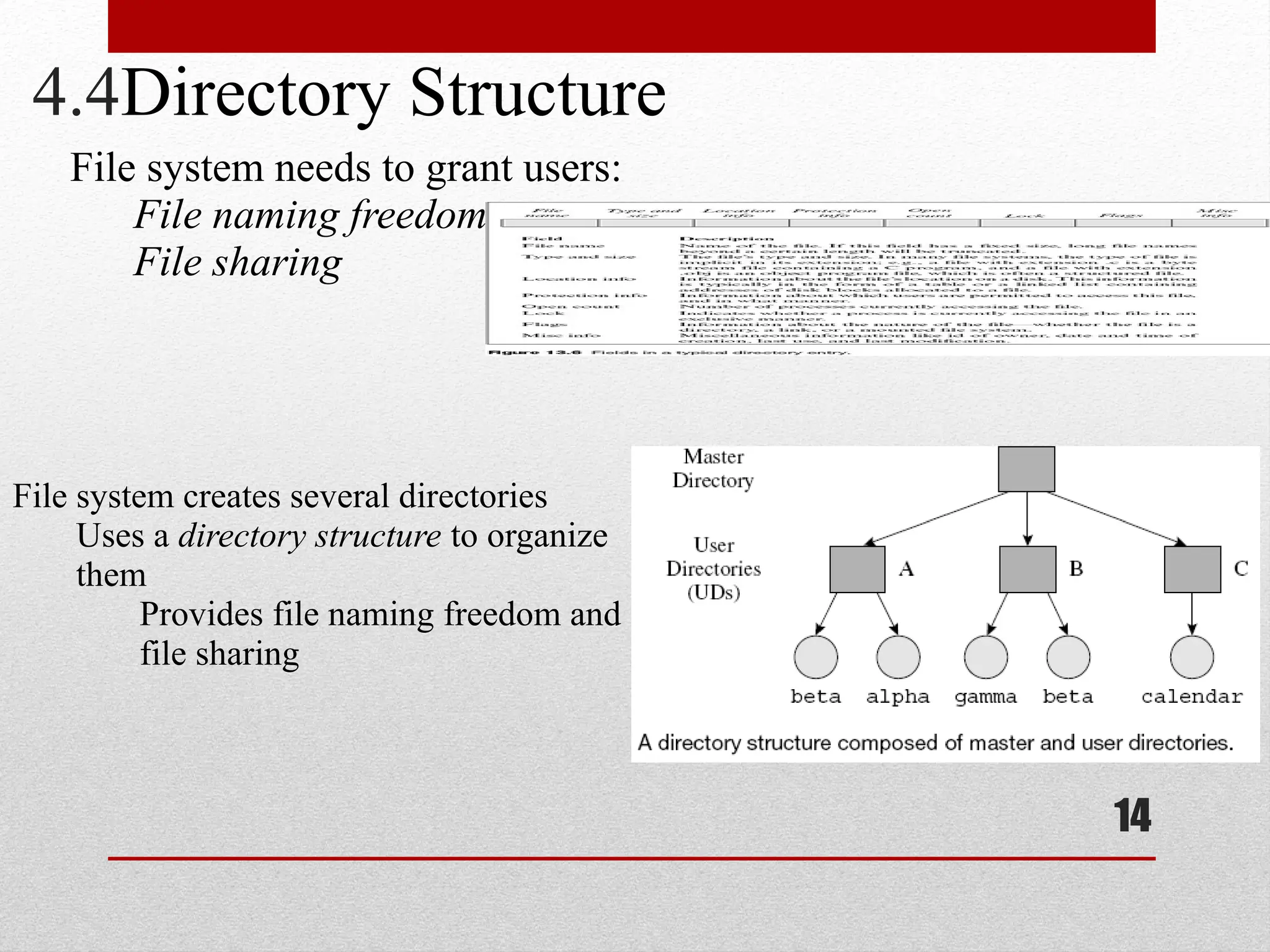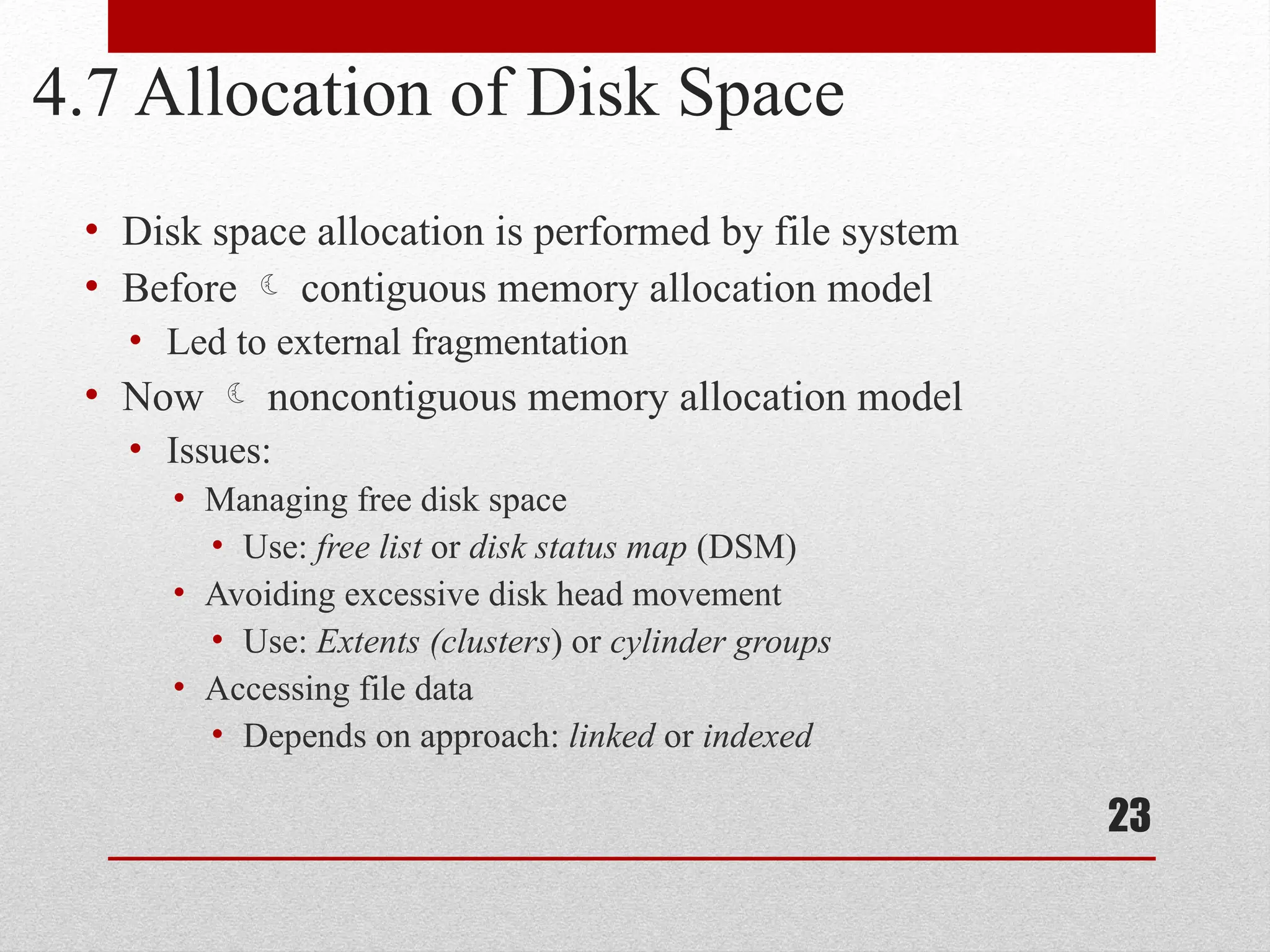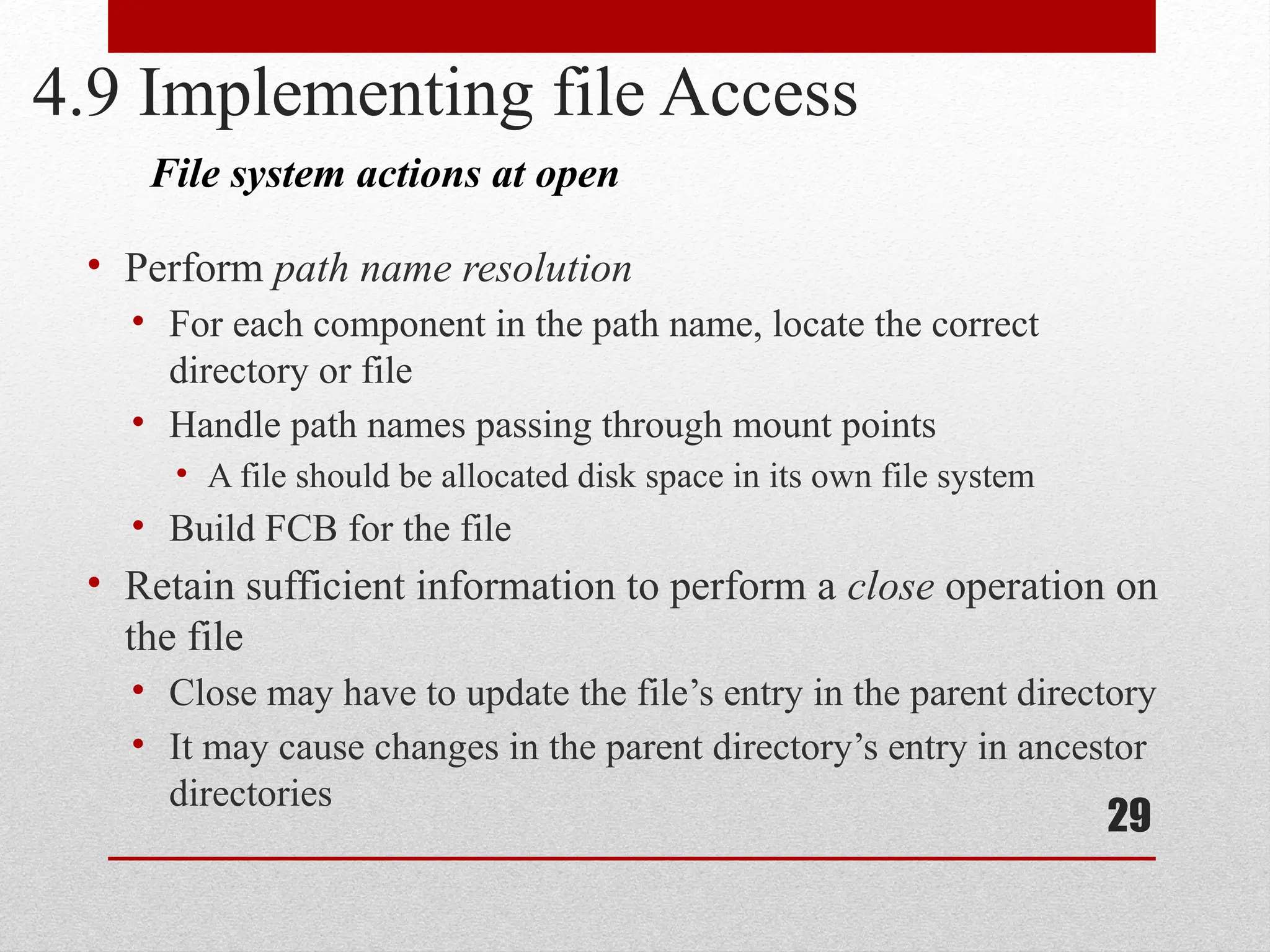Module 4 covers the file systems within operating systems, detailing file operations, organizations, directory structures, file protection, and the interface between file systems and I/O controllers. It explores how files are viewed both as user-owned collections of data and efficient repositories, alongside their logical organization and access methods. Additional topics include disk space allocation strategies, directory maintenance, and file sharing controls to ensure user privacy and operational efficiency.































